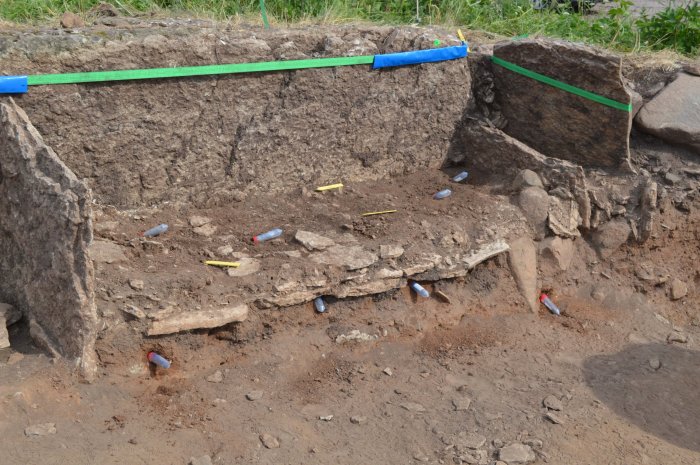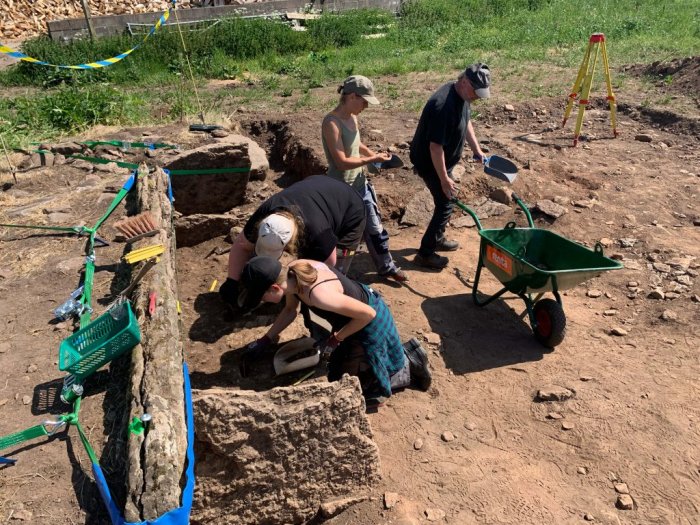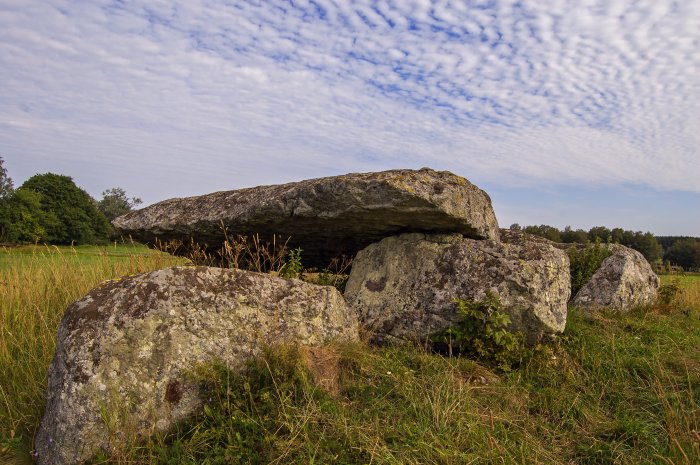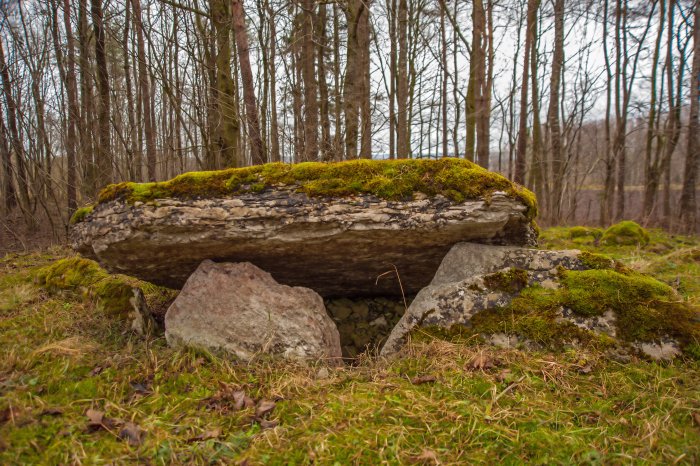Conny Waters – AncientPages.com – The first analysis of the Early Neolithic stone burial chamber unearthed in Tiarp, near Falköping in Sweden, is now completed. Archaeologists say the Tiarp Dolmen is one of the oldest stone burial chambers in Sweden and across the whole of Scandinavia.

The chamber under excavation. East side mold removed. The plastic tubes are samples for environmental DNA. Credit: Karl-Göran Sjögren
“It’s an early grave which dates to the Early Neolithic period, about 3,500 B.C,” says archaeologist Karl-Göran Sjögren at the University of Gothenburg.
Tiarp Stone Burial Chamber Poses A Mystery
However, the Tiarp stone burial chamber poses a mystery archaeologists cannot solve yet. While examining the human remains found in the dolmen, archaeologists were surprised when they discovered parts of the skeletons of the people buried are missing.
“Skulls and large bones are missing and may have been removed from the grave. We don’t know whether that has to do with burial rituals or what’s behind it,” says Sjögren.
Usually, the smaller bones from feet and hands are missing in Megalithic graves. However, here, the situation is entirely different as obviously, for some unknown reason, someone removed skulls and larger bones such as thigh and arm bones.

Archaeologists excavate the Tiarp stone burial chamber. Credit: University of Gothenburg.
At least 12 or perhaps even more people were buried on the Tiarp grave, said Torbjörn Ahlström, Professor of Osteology at Lund University, who studied the bones. Why these people died is unknown. The remains belong to people of different ages, including infants and older humans. They were most likely farmers. There are no signs of violence, and it is possible these people died from some illness. A thorough DNA study of the bone fragments will provide more clues as to how and why these people died.
It is also too early to say whether these people are related, but the bones are well-preserved and reveal their family connection, if there is any.
“The preliminary DNA results show that the DNA in the bones is well preserved. This means we will be able to reconstruct the family relationships between the people in the grave and we are working on that now,” Sjögren said.

There is a large concentration of megalithic tombs at Falkbygden, Sweden. Here is one of them. Credit: Adobe Stock – Ulrika
Falköping has long been known for its many pᴀssage graves dating from a somewhat later period, approximately 3,300 B.C.
Two-thirds of Sweden’s megalithic tombs can be found at Falkbygden. Here, we find Northern Europe’s largest concentrations of megalithic tombs from the Neolithic period. There are more than 250 pᴀssage graves at this site, and the large graves are built of blocks of stone.

There are many Stone Age tombs in Sweden. Credit: Adobe Stock – Ulrika
Most of the stone burial chambers from the Neolithic period at Falkbygdencan can be traced to the Funnelbeaker culture (Trattbägarkulturen), who were the first farmers in Sweden when agriculture reached the area around 4,000 B.C.
Why Is The Tiarp Dolmen Unique?
As previously explained, the Tiarp stone burial chamber is unusual because it misses the smaller parts of the human remains.
The Tiarp Dolmen is also 200 to 150 years older than the pᴀssage graves, which explains why archaeologists can say with certainty it is one of the oldest stone burial chambers in Sweden and across the whole of Scandinavia.
Another curious aspect that makes the Tiarp grave unique is its construction. There’s a little niche at each end. This is unique for graves in Falbygden,” says Karl-Göran Sjögren.
The stone chamber burial in Tiarp Backgården in Falköping was discovered in 1929. Archaeologists conducted a preliminary study of the grave at the time of its discovery and later in 2014 when scientists confirmed the grave was more or less intact and had bodies buried inside it.
See also: More Archaeology News
The recent study conducted by scientists from the University of Gothenburg has provided fascinating information about transformations, “not only in respect to the introduction of agriculture but also regarding ritual practices within the Early and Middle Neolithic in Sweden.
Further analysis will hopefully reveal the humans’ cause of death and relationship and hopefully solve the mystery of the missing body pieces.
The study was published in the Journal of Neolithic Archaeology
Written by Conny Waters – AncientPages.com Staff Writer





